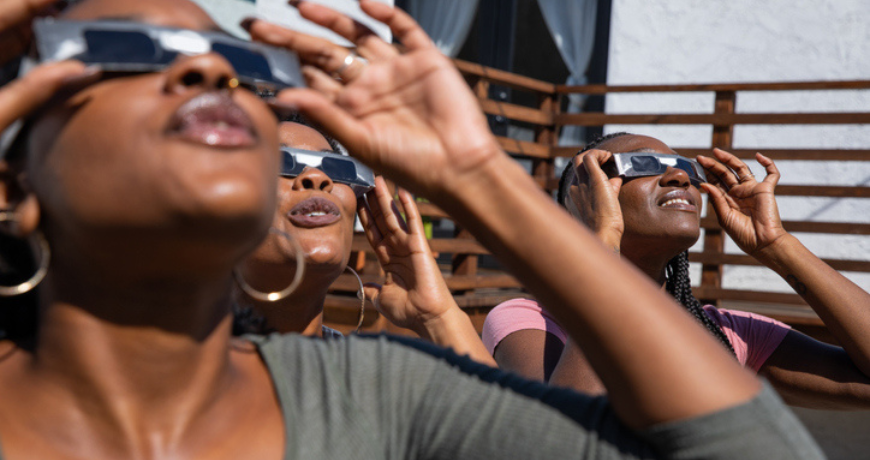On October 14, most of the U.S. is poised to experience a captivating celestial event—a partial solar eclipse. From coast to coast, the extent of the eclipse will vary depending on one’s location. For instance, New Yorkers will be treated to a 23% obscured sun, while those in Los Angeles will witness a more dramatic 71% coverage.
The eclipse’s central path, approximately 125 miles wide, will extend from Oregon to Texas, touching a total of nine U.S. states. Within this path, observers will be privy to the mesmerizing “ring of fire”, a phenomenon characterizing an annular solar eclipse. This unique spectacle arises when the new moon’s apparent size is slightly smaller than the sun, leading to a bright circular halo around the moon at the peak of a 90% eclipse. This stunning “ring” will be visible in regions spanning Oregon, Northern California, Nevada, a minuscule section of Idaho, Utah, northeastern Arizona, southwestern Colorado, New Mexico, and Texas.
Yet, this event isn’t exclusive to the U.S. In fact, parts of North, Central, and South America will all experience a partial solar eclipse. Countries such as Mexico, Belize, Honduras, Nicaragua, Panama, Colombia, and Brazil will also have regions witnessing the awe-inspiring “ring of fire”.
Given the potential harm viewing a solar eclipse can cause to the human eye, it’s crucial to use solar eclipse glasses. This ensures safe observation, protecting eyes from damaging ultraviolet rays. In a commendable endeavor, the Gordon and Betty Moore Foundation’s Solar Eclipse Activities for Libraries project is taking the lead in this. They’re distributing a staggering 5 million solar viewing glasses for free to 13,000 public libraries across the U.S. This initiative marks the largest single eclipse outreach effort ever witnessed in the country.
Moreover, a NASA-supported project, led by the Astronomical Society of the Pacific, has initiated a nationwide network of Eclipse Ambassadors. Their mission? Distribute complimentary solar eclipse glasses, especially emphasizing community events in underserved locales.
As October 14 draws near, checking with local science museums and planetariums could be advantageous. Many will host complimentary events dedicated to the eclipse, likely presenting attendees with a free pair of solar eclipse glasses. In the city of Detroit, residents can check their local public libraries and the Detroit Science Center to obtain complimentary solar eclipse glasses.
For those anticipating this remarkable event, remember: always prioritize safety, gear up with the proper eyewear, and cherish this wondrous dance of celestial bodies.

